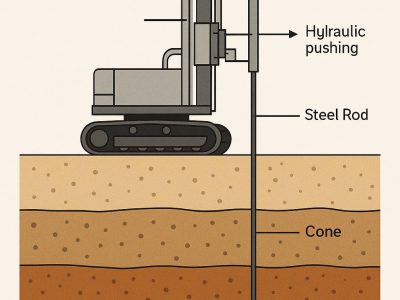As organizations grow and rely more heavily on interconnected systems, the complexity and exposure of their IT infrastructure increases. From internal networks to cloud services and remote access points, these systems form the backbone of modern business operations. Penetration testing plays a crucial role in identifying and mitigating the vulnerabilities that can threaten this foundation. Specifically, infrastructure penetration testing evaluates the strength of an organization’s network, hardware, and system configurations by simulating real-world cyberattacks—before malicious actors do.
What Is Infrastructure Penetration Testing?
Infrastructure penetration testing is a methodical assessment of an organization’s IT systems, designed to uncover security weaknesses across both internal and external components. The goal is to assess how well your infrastructure resists unauthorized access, lateral movement, privilege escalation, data exfiltration, and other advanced attack techniques.
This testing includes evaluating:
- Network devices (routers, switches, firewalls)
- Servers and endpoints
- Virtualized environments and cloud infrastructure
- Remote access solutions (VPNs, RDP, etc.)
- Wireless networks
- Active Directory and identity systems
The objective is not just to find flaws—but to understand how those flaws could be exploited in context.
What Does the Testing Process Look Like?
Infrastructure penetration testing typically includes the following phases:
1. Scoping and Planning
Work with the organization to define the test boundaries, target systems, and compliance requirements. Clear communication ensures ethical and effective testing.
2. Reconnaissance and Enumeration
Using both passive and active techniques to gather intelligence—IP addresses, open ports, running services, user accounts, and more.
3. Vulnerability Analysis
Identify weaknesses such as outdated software, insecure configurations, open services, or weak credentials. Tools like Nmap, Nessus, and custom scripts help streamline this step.
4. Exploitation
Simulate how attackers would exploit discovered vulnerabilities. This includes remote code execution, privilege escalation, lateral movement, and persistence.
5. Post-Exploitation and Impact Analysis
Determine what sensitive data, systems, or services an attacker could access once inside. The focus is on understanding the real business impact of a successful breach.
6. Reporting and Remediation Guidance
Deliver a detailed report outlining:
- Vulnerabilities found and how they were exploited
- The potential impact and severity
- Step-by-step remediation recommendations
Internal vs. External Infrastructure Testing
- External Testing targets internet-facing assets like web servers, firewalls, and VPN gateways. It simulates attacks from outsiders with no prior access.
- Internal Testing starts from within the network, assuming an attacker has already breached the perimeter or is an insider threat. This scenario helps assess lateral movement, privilege
abuse, and domain compromise.
Both are essential for a holistic understanding of your security posture.
Common Vulnerabilities Detected in Infrastructure Pen Tests
Infrastructure penetration tests often uncover issues such as:
- Weak or reused administrative passwords
- Outdated or unpatched operating systems and software
- Misconfigured firewall or VPN settings
- Overly permissive user permissions
- Exposed ports and unnecessary services
- Insecure SNMP or SMB configurations
- Lack of segmentation between sensitive systems
Identifying these weaknesses early can prevent major breaches later.
Benefits of Infrastructure Penetration Testing
- Proactive risk mitigation: Fix vulnerabilities before they are exploited
- Improved incident response: Identify and shore up gaps in detection and response
- Compliance assurance: Meet requirements for ISO 27001, NIST, PCI-DSS, and more
- Real-world validation: Understand how well your defenses work under real attack conditions
- Prioritized fixes: Focus on the most critical risks first
Why CyberSafe Is Your Ideal Testing Partner
With over 20 years of experience in cybersecurity and infrastructure defense, CyberSafe brings unmatched insight, precision, and professionalism to every penetration testing engagement. Our infrastructure testing services stand out for several key reasons:
- Tailored methodologies that align with your specific business model and risk landscape
- Hands-on experts with deep experience in testing complex, hybrid environments
- Compliance-ready reports to support regulatory audits and board-level communication
- Ongoing advisory support to help implement fixes and plan long-term improvements
- Clear, jargon-free communication so that IT and non-technical stakeholders alike understand the risks and next steps
At CyberSafe, we don’t just find vulnerabilities—we help you build stronger infrastructure that’s ready for anything.
Frequently Asked Questions
- How is infrastructure penetration testing different from a vulnerability scan?
While a vulnerability scan automatically checks for known issues, penetration testing simulates real-world attacks to actively exploit weaknesses. Pen testing goes beyond detection—it demonstrates impact. - Will infrastructure testing disrupt my business operations?
No. Tests are carefully scoped and scheduled to avoid any downtime or disruptions. Non-intrusive methods are used unless explicitly approved otherwise. - How long does an infrastructure penetration test take?
It depends on the size and complexity of your infrastructure, but most engagements range from a few days to two weeks including reporting. - Is infrastructure penetration testing required for compliance?
Yes, many frameworks like ISO 27001, PCI-DSS, and NIST recommend or require regular penetration testing to verify the security of infrastructure components. - What happens after the test is completed?
You receive a detailed report outlining vulnerabilities, exploitation methods, and clear remediation guidance. CyberSafe also offers advisory sessions to help implement the recommendations effectively.
Conclusion
Infrastructure penetration testing gives you a clear view of your organization’s defensive weak points—before attackers do. Whether you’re concerned about external threats, insider risks, or regulatory pressure, regular testing is an essential part of a mature cybersecurity program.
With CyberSafe as your partner, you gain the clarity, confidence, and control to defend your infrastructure now and into the future.
Secure your foundation today. Contact CyberSafe to schedule your infrastructure penetration test.




